 Tuesday, 10 October 2006
Are you ready?
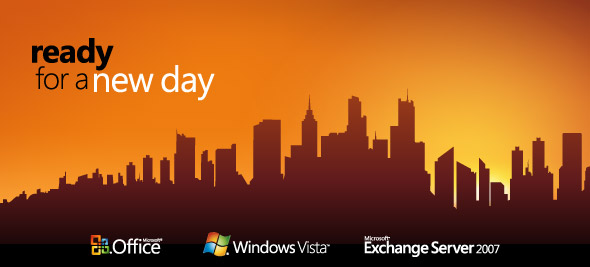
It's time to launch Office, Vista, and Exchange in Canada. Five cities get a large version of the all day event, with business, IT pro and developer tracks, and seven get IT pro and developer talks only. It starts in late November and goes on until January. Registration is free and these things usually full up fast, so register now.
Kate
 Monday, 09 October 2006
I've been messing a lot with time zones lately, planning my trips to South Africa, Spain, and Denmark, along with flight connections through other countries, and trying to be sure that I correctly map the local times people tell me with the Eastern times I need to enter in my Outlook calendar. As part of that I found a neat time zone map at http://www.travel.com.hk/region/timezone.htm. Now time zone maps are not exactly hard to come by, but this one gave me some interesting insight.
Until I found this map I believed, in a vague never-bothered-to-check way, that Newfoundland was the only place whose time zones differered by half an hour rather than an hour from the neighbouring zones:
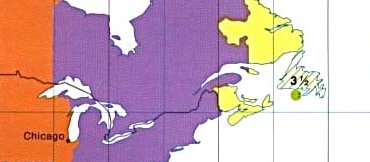
But this map uses that hash pattern to indicate the not-an-hour timezones, and so for the first time I noticed there are other places that do this too:


It's all over the place! But I wonder if people on the other side of the world would get the Canadian joke: The World Will End at Midnight! 12:30 in Newfoundland.
Kate
 Sunday, 08 October 2006
I was looking forward to next year's Tech Ed USA for more than the usual reasons we look forward to a Tech Ed. You see, it was going to be in New Orleans, and I've never been there. Everyone said it was a place you really should see, and here was my chance to both see it and somehow feel like I was doing a good deed by contributing to the economy. But that's not how it's going to be, apparently, not in 2007 anyway. (Story on bink.nu) It seems the airlines haven't bounced back yet in terms of allocating capacity to the city, so Tech Ed 2007 will be somewhere else. Any chance they'll consider Toronto? 
Kate
 Saturday, 07 October 2006
Confused about what .NET 3.0 is and is not, and what the next set of libraries after 2.0 will be called? Here's a pretty comprehensive summary from Julie Lerman that lays it out for you.
.NET 3.0 is.NET 2.0 plus the four new components [WPF, Cardspace, WCF, Workflow]. Those four core technologies are called the ".NET 3.0 Components".
The four new components were developed as part of the Vista effort but are so cool that everybody wanted them to be available downlevel, which they are to varying degrees. Julie also gets into Orcas, Atlas/Ajax, LINQ, and what works with what and when (roughly) you'll see it. Check it out.
Kate
 Friday, 06 October 2006
Airports, like software, need to be tested before they're released -- or I guess for an airport, you'd say opened. That's why the Greater Toronto Airports Authority, which operates Toronto Pearson International Airport (YYZ), is asking for volunteers to come to the airport on the morning of Oct 28th and wander around like they were trying to catch a flight, or arrive from a flight, or whatever. Can you read that sign as you head down the elevator? Is it obvious that you are not at ground level and need to find an elevator to get to ground level? Is this hallway really wide enough when two planes arrive at once and 400 people are walking through it? It's not like there wasn't any thought put into that sort of thing in advance, but before you open the doors, testing is a really good idea.

If you live in the Greater Toronto Area and want to tell your grandchildren you once beta tested an airport (perhaps the fact that you parked and ate at an airport for free will excite them more) then head on over to http://www.gtaa.com/airportvolunteer/ and sign up. Apparently there's some sort of souvenir in it for you, and you'll get to see the new parts of the terminal months before they open. Go for it!
Kate
 Thursday, 05 October 2006
Some people are so busy playing UAC-a-mole on their Vista machines that they aren't even looking at the dialogs. In fact these "annoying interruptions" are actually full of information, and it would be a good plan to learn how to read them. In today's installment, I'll show you the results of right-clicking two different shortcuts and choosing Run as Administrator:
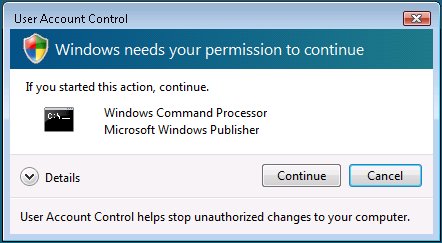 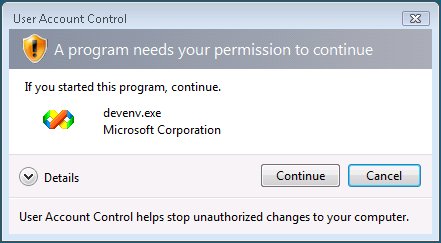
See, they're really quite different. The top one is saying "Part of Windows! OK to Trust!" and the bottom one is saying "Stop a minute! Do you really know this app?"
The problem is that most of us are going to read "blah blah blah blah do you want to keep working / playing blah blah blah" and just click Continue without even thinking. That's a shame.
Kate
 Wednesday, 04 October 2006
One of the best things about being a Regional Director is the other Regional Directors. These are wonderfully smart people who share their knowledge with each other. Most of them also share with the public through blogging. If you're an avid reader of my blog you'll have seen links to other RD blogs over time. If you'd like a one-stop-shopping approach to RD blogs let me recommend http://indepthtalk.net/Feed.aspx, which shows the first paragraph or so of each post, or http://indepthtalk.net/Community/RD.category which gives links to all the blogs and shows just headlines. There's also an RSS feed at http://indepthtalk.net/Community/RD/Feed.rss.
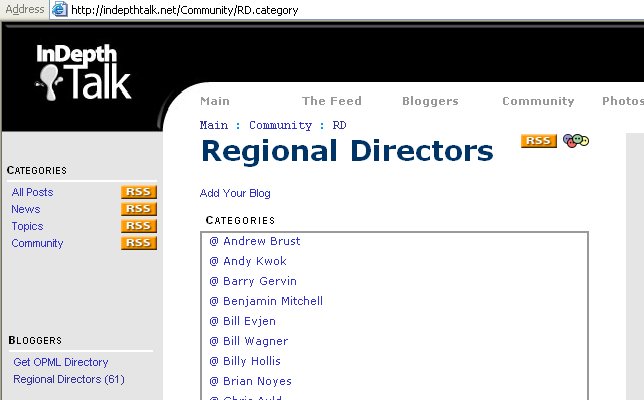
This is hand-aggregated content, just like TechEdBloggers and its cousins. That means not every post is aggregated, and they don't show up the instant they're posted. But it's a fantastic way to see what we're up to and to get to know some blogs you may not be reading yet. Give it a whirl!
Kate
 Tuesday, 03 October 2006
Under Vista, an application can have a manifest that identifies the privilege level it needs to run. These manifests can serve other purposes, too: they're also known as fusion manifests and can be used to identify dependencies among other things. Adding one to your application starts with adding a file to your project (right click and choose Add, New Item: depending on the language you're using you might be able to choose XML file or else Text file will do.) Then you put appropriate XML in it, like this: <?xmlversion="1.0" encoding="utf-8" ?>
<assembly xmlns="urn:schemas-microsoft-com:asm.v1" manifestVersion="1.0">
<assemblyIdentity version="1.0.0.0"
processorArchitecture="X86"
name="Sample"
type="win32" />
<description>Sample Manifest Test Application</description>
<trustInfo xmlns="urn:schemas-microsoft-com:asm.v3">
<security>
<requestedPrivileges>
<!-- <requestedExecutionLevel level="requireAdministrator" /> -->
<requestedExecutionLevel level="asInvoker" />
<!-- <requestedExecutionLevel level="highestAvailable" /> -->
</requestedPrivileges>
</security>
</trustInfo>
</assembly>
You save the file as ApplicationName.exe.manifest. (When I intend to embed the manifest, I tend to call it app.manifest instead. If you plan to embed it, the filename doesn't really matter, but then if you change your mind and want an external manifest you'll need to remember to rename the file.)
At this point, you can follow the instructions in Catherine Heller's blog. The thing is, when I first read them I thought she skipped a step or something in explaining how to do it with Visual C++ 2005. After all, the other approaches had tons of steps! There are .rc files, and .res files, and custom build steps, and unloading projects so you can open them differently, and never-mind-the-error-message notes, and all of that. And then for C++ it's just "open the project properties dialog, on the left-hand pane expand the Configuration Properties->Manifest Tool node and select Input and Output. You can enter the name of an external manifest file in the Additional Manifest Files field." But you know what? That's it! You make the manifest, put its name in the dialog, build the project.
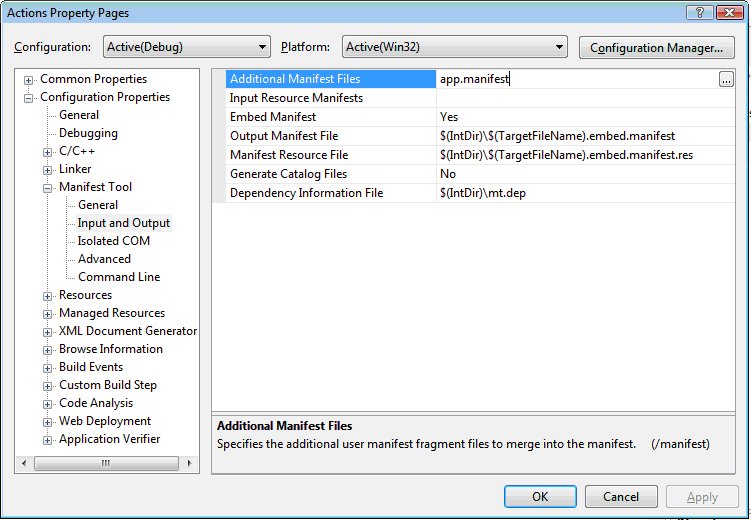
Presto, your app has a manifest. Depending on the value you enter for requestedExecutionLevel and the account under which you run the app, you will see different behaviours at runtime.
Kate
© Copyright 2024 Kate Gregory
Theme design by Bryan Bell
newtelligence dasBlog 2.3.9074.18820   | Page rendered at Saturday, 23 November 2024 17:14:44 (Eastern Standard Time, UTC-05:00)
|
On this page....
Pluralsight Free Trial
Search
Navigation
Categories
Blogroll
Sign In
|